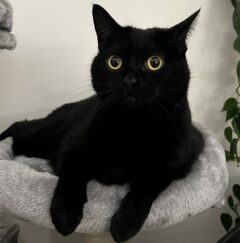From this week’s assignments I gathered that the past belongs to all people, but it is the job of the historian to study and interpret the past so that it is easily accessible to the public. In Hearing Change in the Chocolate City: Computational methods for Listening to Gentrification by Alison Martin we see that the soundscape of DC has its own past that is culturally significant to the people that lived and grew up there. Without Alison making this information available I would not have known that go-go music was so popular in DC.
The level of copyright that I have selected for my website is CC BY- NC 4.0 which means that credit must be given to me if someone else wants to use it and it can only be used for noncommercial use.
Bowen, James P. 2018. “A Provincial Frost Fair : Urban Space, Sociability and Spectacle in Shrewsbury During the Great Frost of 1739.” Midland History 43 (1): 43–61. https://doi.org/10.1080/0047729X.2018.1461748.: CC by
“All the Fun of the Frost Fair: Why Did the Thames Freeze?” n.d. Museum of London. Accessed February 19, 2024. https://www.museumoflondon.org.uk/discover/frost-fairs. : Non-commercial research or private study, Instruction for illustration, Quotation
For my JSTOR sources I can use them as long as I cite properly and I use it as an educational tool.
Sims, Liam. 2013. “Printed ‘Frost Fair’ Ephemera in the University Library – Cambridge University Library Special Collections.” April 9, 2013. https://specialcollections-blog.lib.cam.ac.uk/?p=4660.: I do not see a Copyright on this website. But I would assume it follows the same Copyright law as Museum of London since they are both in the UK.
Kelly, Morgan, and Cormac Ó Gráda. 2014. “The Waning of the Little Ice Age: Climate Change in Early Modern Europe.” Journal of Interdisciplinary History 44 (3): 301–25. https://muse.jhu.edu/pub/6/article/526410. : License Restrictions. Unless otherwise stated in these Terms of Use, you may not modify, translate, create derivative works of, copy, distribute, market, display, remove or alter any proprietary notices or labels from, lease, sell, sublicense, transfer, decompile, reverse engineer, or incorporate into any information retrieval system, this website, any website content, or any portion thereof. Further, you may not (i) use this website for any unauthorized or illegal purpose or activity.
For my final project I plan on selecting CC by-NC 4.0 because it will allow other people to use my information if they cite me and its Noncommercial use because I don’t want other people making money off of my work. I don’t think I will have any limitations because I don’t plan on making money off of this project, so I don’t need to worry about licenses as long as I properly cite my sources.


Hi Ben, I liked your interpretation of this week’s assignment question of who owns the past. I personally agree that something can never be fully owned, because everyone has their own experience and uses around an idea/thing. I think it’s completely fair to not want others to profit off of your work, and it sounds like you set up your site/project well so that it’s protected from that. I also stated that I don’t think my project should yield any monetary value, but I don’t mind if someone else wanted to. MY project is going to be labeled as public domain. From your thorough explanations, it definitely sounds like you won’t really run into limitations with your research!